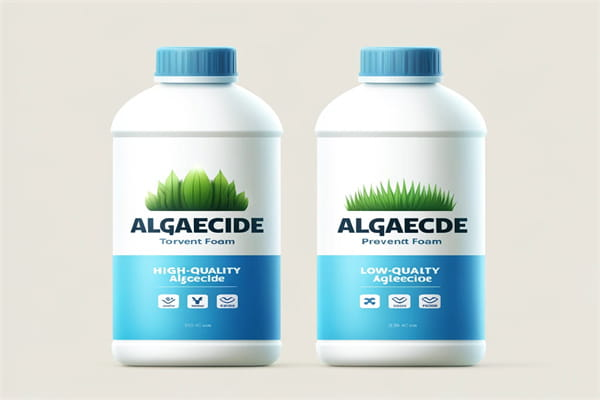In the quest for crystal-clear waters, the role of algaecides has become increasingly pivotal, yet their deployment often finds itself at the crossroads of environmental protection and operational efficiency. Today, we embark on an exploration of how modern algaecides are navigating the intricate balance between preserving the vitality of aquatic ecosystems and ensuring the efficacy of water treatment processes. This delicate dance requires a nuanced understanding of the complex interactions between algae, water quality, and the environment, coupled with innovative technological advancements.

I. Advancements in Eco-Friendly Formulas
1. Natural Ingredients:
Manufacturers are exploring and adopting copper-free compounds, botanical extracts (e.g., garlic oil, cinnamon extracts), and enzymes derived from natural sources to combat algae growth.
2. Targeted Control:
These eco-friendly formulas enable precise targeting of algae blooms, minimizing harm to beneficial aquatic microorganisms and fish populations.
3. Reduced Collateral Damage:
The use of natural ingredients reduces the risk of disrupting the delicate balance of aquatic ecosystems, ensuring long-term sustainability.

II. Smart Application Techniques of Algaecides
1. Advanced Monitoring:
Leveraging satellite imagery, drones, and in-water sensors, water managers can pinpoint algae blooms with pinpoint accuracy.
2. Precision Application:
This targeted approach significantly reduces the amount of algaecide required, lowering environmental impact and operational costs.
3. Smart Dosing Systems:
Automated systems adjust dosage based on real-time water quality data, ensuring optimal and efficient use of algaecides.
III. Long-Term Sustainability Strategies
1. Aquatic Vegetation Restoration:
Restoring native aquatic plants promotes natural competition with algae, reducing nutrient availability and light penetration.
2. Nutrient Management:
Education programs and policies focus on reducing nutrient runoff from agricultural and urban sources, addressing the root causes of algal blooms.
3. Integrated Management:
Combining chemical, mechanical, and biological methods to create a holistic approach to algae control.
IV. Balancing Efficacy with Environmental Considerations
1. Rigorous Testing:
New algaecide formulations undergo extensive testing to evaluate biodegradability, persistence, and potential impacts on non-target species.
2. Collaborative Efforts:
Researchers, regulators, and industry stakeholders work together to ensure products meet strict environmental standards.
3. Life Cycle Assessments:
Comprehensive evaluations consider the entire lifecycle of an algaecide, from production to disposal, to minimize overall environmental impact.
V. Customer Engagement and Education
1. Educational Resources:
Manufacturers and service providers provide webinars, fact sheets, and hands-on training to educate customers on responsible algaecide use.
2. Stakeholder Engagement:
Active engagement with stakeholders, including government agencies, environmental groups, and the public, addresses concerns and fosters trust.
3. Case Studies and Best Practices:
Sharing success stories and best practices promotes the adoption of sustainable algae management practices.
VI. Innovation Driving the Future
1. Novel Compounds:
Research into new chemical and biological agents promises more effective and environmentally benign algae control solutions.
2. Advanced Delivery Systems:
Developments in nanotechnology and controlled-release formulations enhance the delivery and efficacy of algaecides.
3. Biotechnological Solutions:
Genetically modified bacteria and other biotechnology-based approaches offer innovative ways to combat algae growth sustainably.
4. Integrated Technology:
The seamless integration of the Internet of Things (IoT), Artificial Intelligence (AI), and big data analytics into algae management systems holds immense potential for revolutionizing the way we approach water purification and environmental conservation.
Conclusion
In conclusion, the ongoing endeavor to harmonize environmental protection with the vital task of water purification necessitates a highly nuanced and delicate approach towards the utilization of algaecides. This delicate balance cannot be achieved through simplistic measures but requires a multifaceted strategy that encompasses every aspect of the process. By wholeheartedly embracing eco-friendly formulas for algaecides, the industry is making a significant stride towards minimizing negative environmental impacts, ensuring that the chemicals used to combat harmful algae blooms do not inadvertently harm the very ecosystems they are intended to protect.

 Instant
Quote
Instant
Quote Email
Us
Email
Us